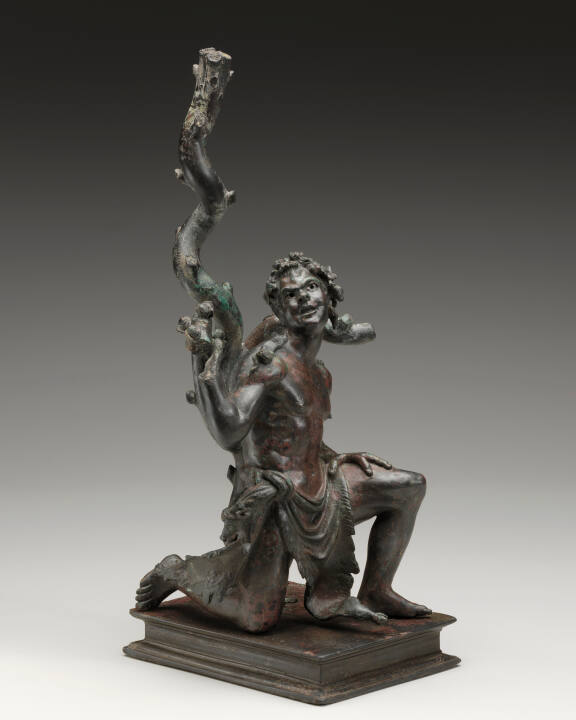Kneeling Satyr
- 103
Found at Pergamon, Turkey [1];
With Jacob Hirsch, New York, by 1953 [2];
Purchased from Hirsch by The Nelson-Atkins Museum of Art, Kansas City, MO, 1953.
NOTES:
[1] According to Dr. Jacob Hirsch, NAMA curatorial files.
[2] Jacob Hirsch, PhD. (1874–1955) was born in Munich, studied at Deutsches Archäologisches Institut in Rome, and then founded a dealership in Munich in 1897. He moved to Lucerne in 1919 and founded Ars Classica in 1922. In 1931, he opened Jacob Hirsch Antiquities in New York. At some point, he also had a gallery in Paris. He handled coins and antiquities but also had his own collection. See Hadrien Rambach, “A List of coin dealers in nineteenth-century Germany,” in A Collection in Context. Kommentierte Edition der Briefe und Dokumente Sammlung Dr. Karl von Schäffer, ed. Henner Hardt and Stefan Krmnicek (Tübingen, Germany: Tübingen University Press, 2017), 69–70, hal-04345662. See also “Dr. Jacob Hirsch, 81, An Authority on Art,” New York Times, July 5, 1955, 29.
Margarete Bieber, “A Satyr in the Pergamene Style in Kansas City,” American Journal of Archaeology 67 (1963): 275-78, plates 59-61.
Claude Rolley, Monumenta Graeca et Romana, vol. 5, Greek Minor Arts, fascicle 1, The Bronzes (Leiden: E.J. Brill, 1967), 13, no. 27, plate 43.
Rolf Michael Schneider, Bunte Barbaren: Orientalenstatuen aus farbigem Marmor in der römischen Repräsentationskunst (Worms: Wernersche Verlagsgesellschaft, 1986), 29n86, no.1.
Luigi Beschi, “Il Sileno inginocchiato,” in Bronzi da industria, ed. Liliana Mercando, Emanuela Zanda, and Luigi Beschi (Rome: Edizioni De Luca s.r.l., 1998), 75n5, 78.













